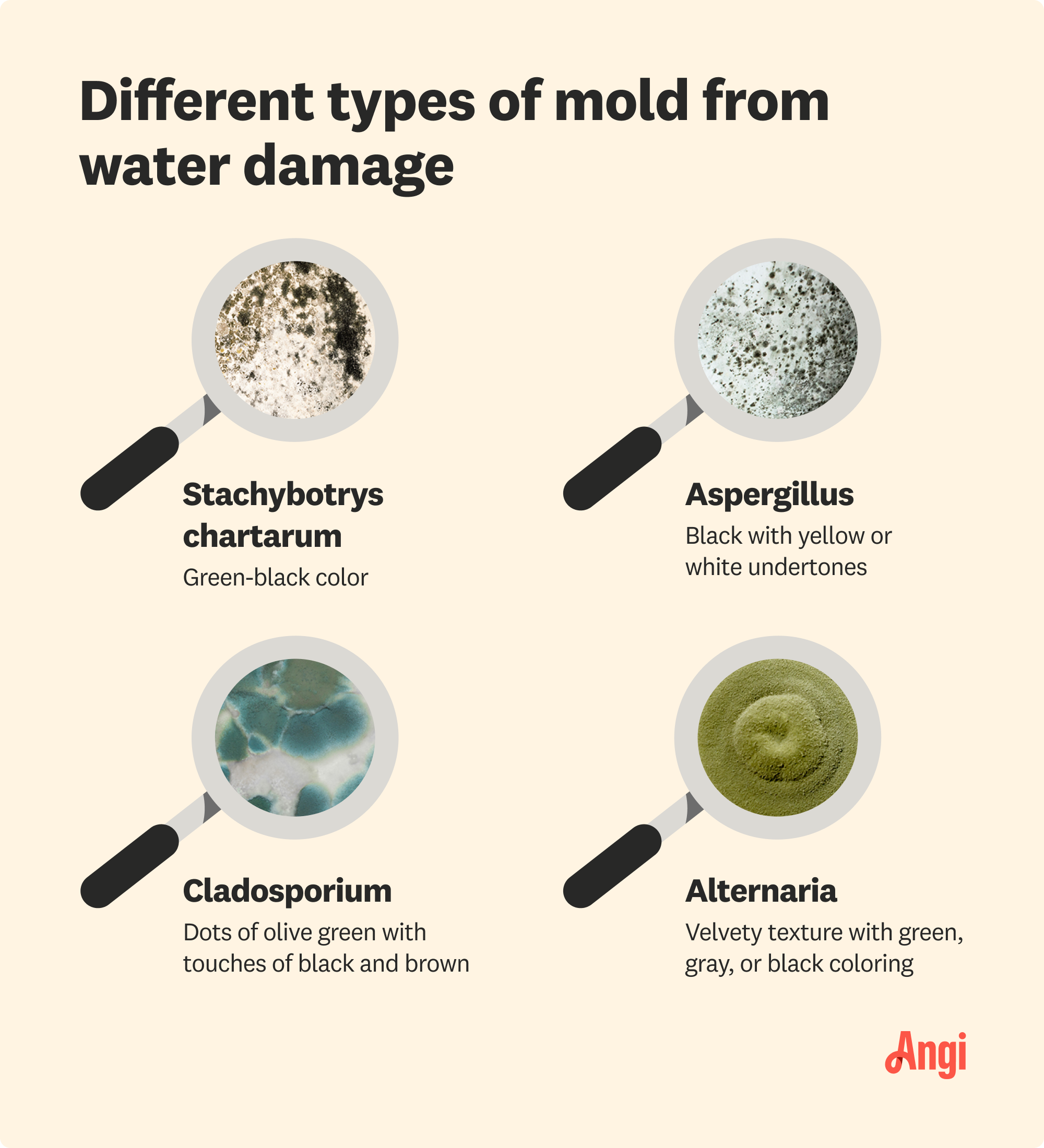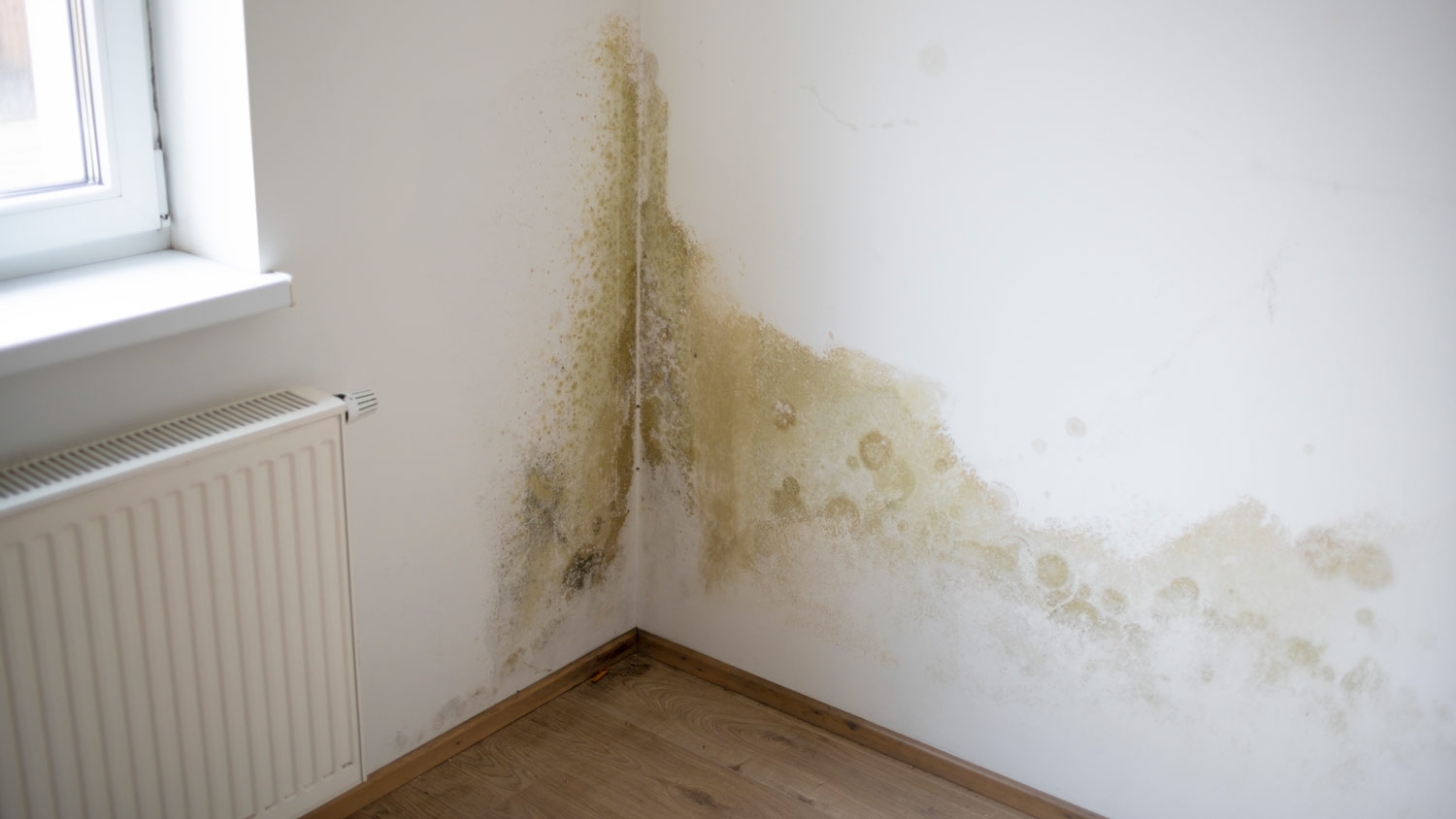How Fast Can Mold Grow After Water Damage?
What’s damp today will be moldy tomorrow


In most cases, mold will begin growing in 24 to 48 hours, but it could begin just 12 hours after water damage in hot, humid areas.
After water damage, your first order of business should be to remove standing water and then dry out the area to prevent mold growth.
Mold can cause allergy symptoms, exacerbate respiratory problems, and even damage your property over time.
A flood, roof leak, or burst pipe might seem like the worst-case scenario, but if you don’t act quickly, the water damage to your home will only be the beginning. In this guide, we’ll explain how fast mold can grow after water damage, how to identify a mold issue, and more to keep you fully prepared.
How Fast Can Mold Grow After Water Damage?
Mold will begin growing within 24 to 48 hours after water damage in most cases, but in some homes, it can set in within just 12 hours. Getting the water out and dealing with the moisture immediately should be your number one priority once you discover water damage in your home, and it can save you money on your water damage restoration costs.

Factors Affecting How Quickly Mold Sets In
Why does the timeline vary? There are two major reasons.
Humidity: Mold thrives in humid environments, so if you live in an area with naturally high humidity, the addition of water in your home can allow mold spores to take root and begin multiplying more quickly.
Temperature: Mold also thrives in warmer temperatures. If you live in a colder climate, you may have the full 48 hours before mold begins to grow. If you live in an area where temperatures are consistently high, you may only have 12 hours.
How to Identify Mold Growth

After water damage, there are three things you can look out for to identify mold growth.
Visible mold: The most obvious sign of mold growth is, well, mold growth. When mold begins growing on surfaces, you’ll see circular black spots forming that might appear fuzzy. This is a clear sign of mold, although it might not be immediately obvious if it’s hidden under cabinets or behind furniture.
Musty odors: Mold spores will be released from the surfaces where the mold is growing and become airborne. Those spores create a musty, moldy odor in areas affected by mold, so this is a clear sign of water damage and resulting mold growth.
Allergy symptoms: Many people will experience allergy symptoms when exposed to mold spores. If someone in your home suddenly experiences itchy eyes, a runny nose, coughing, or sneezing right after water damage, you may have mold growth.
How to Prevent Mold Growth After Water Damage

Knowing how to identify and treat mold growth is great, but the best thing to do after water damage is to avoid mold altogether. This will require drying out the area to remove moisture that allows mold to thrive. You can follow the steps below to prevent mold growth after water damage.
Pump out standing water: Begin by pumping out any standing water to mitigate the damage.
Vacuum up puddles: Use a shop vacuum to suck up puddles and remove excess water.
Remove water-logged materials: Consider cutting out and removing water-logged drywall, insulation, carpet, carpet padding, furniture, and belongings that are beyond repair.
Set up blower fans: Set up blower fans in the water-damaged room and run them for 24 to 72 hours.
Run a dehumidifier: Run a dehumidifier in the room, as well. This will increase the effectiveness of the blower fans and help bring down moisture levels to prevent mold growth.
Taking aggressive action immediately after water damage is the best way to prevent mold growth. If you’re not prepared to carry out the steps above or don’t have the necessary tools or time, call a water damage restoration company near you to get the work done for you.
Frequently Asked Questions
A one-time leak can cause mold, but it depends on the severity of the leak, the humidity in your home, and other factors. If you catch the leak quickly and the damage is minor, you may not experience any mold. If the water soaks into absorbent materials like drywall and doesn’t dry quickly enough, though, mold will start to grow within 24 to 48 hours. If your home’s interior has a high humidity level, mold could set in within just 12 hours. It’s best to run a blower fan for 24 hours after a one-time leak to avoid mold growth.
Mold behind drywall can be difficult to assess without removing the building material, but you may notice stains on your ceilings or walls if the mold growth is bad enough. Other signs include allergy symptoms and musty odors in your living space. If you suspect mold behind drywall after a leak, hire a water damage restoration professional to assess and address the damage.
Drywall can get wet and dry out without sustaining permanent damage, but only if the water damage is minor. If you have a small leak and are quick to correct the issue and set up blower fans and dehumidifiers, your drywall should dry out. If the leak is persistent, the drywall becomes totally waterlogged, or mold begins forming on the drywall, you should remove and replace it.








.jpg?impolicy=leadImage)






